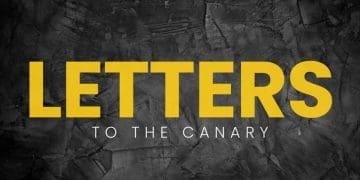A parliamentary review committee said the new voter ID system “disenfranchises more electors than it protects” on 11 September. The findings give credence to widespread concerns leading up to the system’s introduction, and reveal a latent attack on democracy.
‘Poisoned cure’
The government first announced plans for photographic identification as a requirement to vote nationwide in May 2021. It justified the plans at the time as a means of combatting voter fraud, claiming that there were “frequent anecdotal reports” of one person claiming to be another in order to cast a vote.
Campaigners, civil society groups and even Labour opposed the plans from the outset. They described them as a form of voter suppression. Nonetheless, the government ploughed ahead and the new system came into effect in January. However, despite the Tories’ claims of “frequent anecdotal reports”, it emerged in April that there hadn’t been a single proven case of in-person voter fraud.
As a result, the photo ID system ‘solved’ a problem that didn’t exist. This is what the All-Party Parliamentary Group on Democracy and the Constitution (APPGDC) described it in its report as a “poisoned cure”.
Marginalising the marginalised
The Electoral Commission previously said the change would have the greatest negative impact on certain already-marginalised sections of society. The APPGDC’s report all but confirmed these problems.
It said that, since 2013, there have been eight convictions or cautions for voter impersonation. All of these were by postal votes, however, with none resulting from in-person voting.
It also gave concrete disenfranchisement figures. It said the Electoral Commission recorded that 0.7% of voters were turned away due to lack of ID, and of those only 63% returned with ID to vote. 0.25% of those people didn’t return at all, equating to roughly 14,000 people. Meanwhile, independent observers recorded a much higher 1.2% of people turned away due to lack of ID.
In both cases, the APPGDC believed the numbers “are likely a significant under-estimate”. This is due to the greeters at polling stations, who turned people away before they even entered the station but had no obligation to record doing so. The Good Law Project said in July that 99 councils used greeters during local elections in May, and only three of those kept records.
Furthermore, the impact of the new voter ID system was far from evenly spread. The APPGDC’s report noted that:
A disproportionate number of electors who were not permitted to vote appeared to be non-white passing.
By contrast, all of those who were observed being permitted to vote without presenting ID were white-passing.
It noted that in some cases where people presented photo ID such as a passport, they were still denied entry to vote. Those forms of ID tended to be from non-white majority countries such as Pakistan and Bangladesh.
The report also highlighted the case of Andrea Barrett, who refused to remove her mask at the polling station in May because she is immunocompromised. She had both photo ID and a video of her face without a mask.
Face matching
One of the APPGDC’s inquiry panel members was Robert Buckland. The former justice secretary oversaw the introduction of the plan and campaigned for it publicly. He said on BBC Question Time in May 2021 that there would be “no issue at all” because the government would issue free voter IDs for those who requested them.
However, the APPGDC’s report showed that just 89,500 people applied for such an ID, out of an estimated 250,000 to 350,000 that required one. Furthermore, only 25,000 people used these IDs to register their vote.
Nonetheless, Buckland remains supportive of the changes. He told the Guardian that the government needs to address and remedy the issues, but that it “addresses a potential weakness in our voting system”.
There is one huge problematic weakness in the new system, though: the high error rate of ‘face matching’. Evidence submitted to the APPGDC said that experiments have shown that matching an unfamiliar face to a photo failed 20% to 35% of the time. The APPGDC noted that the error rate could be high amongst polling station officers because the ability varied greatly between individuals.
Election impact
The report said that, with figures averaged out, the new system denied:
more than 14 000 people the right to vote for every one instance of personation prevented.
This is clearly scandalous.
The APPGDC said it doesn’t believe that the new voter ID system changed any results during local elections. However, extrapolating the figures out to a general election painted a different picture. The number of people turned away:
could have changed the result in 16 constituencies in a general election, based on the 2019 results.
The APPGDC ultimately concluded that the system “may be remedied”, and presented three recommendations for doing so. The first of these is to enable people to vote without ID by making a “statutory declaration” confirming their identity, thereby pretty much returning it to the pre-photo ID system.
All of this to fix a problem that didn’t exist in the first place – making the new voter ID system less a ‘poisoned cure’ and more straight-out poison.
Featured image via secretlondon123/Flickr









